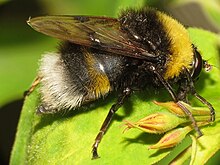
Xylota sylvarum is a common Palearctic species of hoverfly.
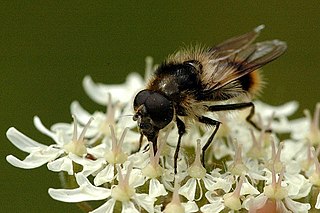
Cheilosia illustrata is a species of hoverfly belonging to the family Syrphidae.
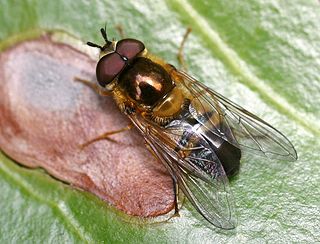
Epistrophe eligans is a European species of hoverfly.

Criorhina berberina is a species of hoverfly. It is found in the Palaearctic from Fennoscandia South to Iberia and Italy. Ireland eastwards through Europe into Turkey and European Russia . C. berberina is a bumblebee mimic. The body has uniformly long dense pubescence, obscuring the ground-colour. There are two forms one with the pubescence more or less extensively blackish, one in which it is entirely yellow or tawny. Criorhina differ from other bumblebee mimics - Mallota, Arctophila, Pocota and Brachypalpus by the form of their antennae: the first segments are thin and form a stalk, the third segment is shorter than it is wide. In Criorhina, the face projects downwards, in contrast to Pocota and Brachypalpus.

Blera fallax, the pine hoverfly or roodkapje, is a rare species of hoverfly normally associated with mature pine trees in Northern and Central Europe.
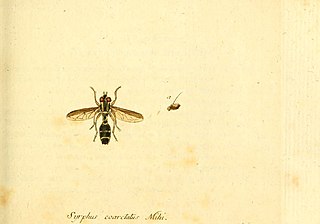
Doros is a genus of hoverflies. They are large slender flies, that mimic solitary wasp in slow flight. They have very limited flight period.

Neoascia podagrica is a species of hoverfly.

Caliprobola is a genus of Hoverflies, from the family Syrphidae, in the order Diptera.
Pipiza fenestrata is a species of hoverfly, from the family Syrphidae, in the order Diptera. They are found in Central Europe and live in deciduous forests. This species of Pipiza tends to live deeper in the forest than others in this genus. Males of this species possess holoptic vision, while females have dichoptic vision.
Pipizella maculipennis is a species of hoverfly, from the family Syrphidae, in the order Diptera.
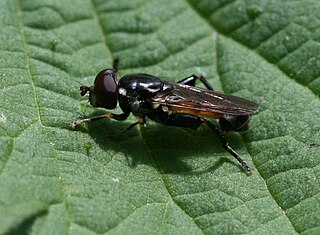
Tropidia scita is a common Palearctic species of hoverfly associated with wetlands, ponds and ditches. The larvae have been recorded living in the basal sheaths of Typha.
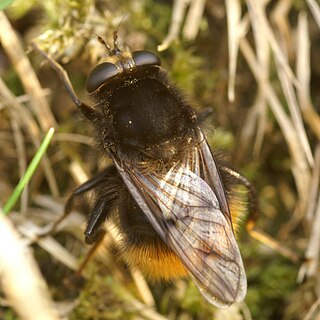
Criorhina ranunculi, is a species of hoverfly found in the spring in many parts of Britain and Europe.

Trichopsomyia flavitarsis is a European species of hoverfly.
Pipiza carbonaria is a species of hoverfly, from the family Syrphidae, in the order Diptera.
Pipiza fasciata is a species of hoverfly, from the family Syrphidae, in the order Diptera.

Doros profuges is a Palearctic species of hoverfly.

Brachypalpus valgus is a species of hoverfly found in Europe.

Chrysogaster cemiteriorum is a European species of hoverfly which can be found feeding on umbelliferous flowers wetlands and damp meadows.

Sphegina clunipes is a Palearctic species of hoverfly.

The Spheginina is a subtribe of hoverflies.
